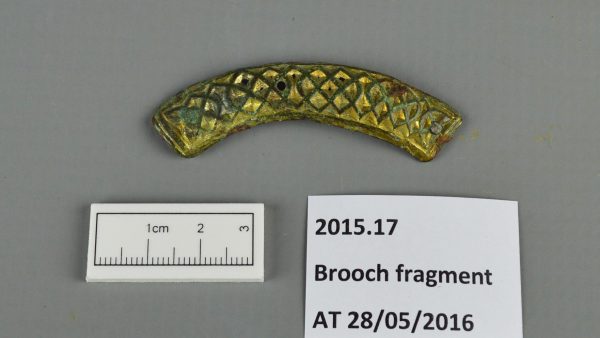
Dr Norman Morrison Collection
Policeman, zoologist, herpetologist, trade unionist, photographer, author
Norman Morrison (1869-1949) was born at 40 North Shawbost to Donald Morrison (An Seòladair) and Annie Morrison (nee Macleod). He briefly attended Shawbost School but had very little formal education. After working briefly as a fisherman, he moved to Glasgow in 1890 where he joined the police. However he was dismissed from the constabulary in October 1891, having been found to be drunk on duty a number of times.

Undeterred, Norman joined the Argyllshire Constabulary in January 1892 and was posted to Campbeltown and then to Port Charlotte, Islay in 1897. It was while living on Islay that Morrison’s interest in photography grew. On his visits home to Shawbost in the early 1900s he took his camera with him, capturing a series of remarkable glass plate negatives of family members and neighbouring families, a few of which are shown here. These represent some of the earliest photography of people in this area.

As well as working as a Police Constable in Glasgow, Campbeltown and Islay, Morrison took a great interest in studying the natural world. He began to study eels and adders in depth and was noted for often having live specimens in his uniform pockets, earning him the nickname ‘The Snake Man’.

In June 1911, Norman was promoted to Sergeant and the family transferred to Dunoon where he was an active member of the local literary and debating society.
Norman had always been interested in police politics and around this time he started campaigning for improved conditions. He was a member of the National Union of Police & Prison Officers, founded in 1913. In 1913 he was transferred to Kinlochleven, moving to Oban in 1916. Morrison continued to campaign for improved working conditions, much to the anger of senior management, and on 15 March 1919 he was called in by his Chief Constable and given the choice of resigning his membership of the National Union of Police & Prison Officers or resigning from the police. Norman chose the latter, writing his resignation letter in front of his commanding officer. Two of his colleagues also faced the same dilemma.
The people of Oban actively petitioned the Constabulary and the Prime Minster to reinstate Norman Morrison and by April 1919 he was back in post. However, later that year and possibly as punishment, he was transferred to Campbeltown where he retired on 1 February 1922 after 30 years’ service.

The sacking of Norman Morrison, along with two of his colleagues in 1919, along with national police strikes in 1918 and 1919 led to government intervention. The Police Act 1919 banned police officers from membership of trade unions, but the Scottish Police Federation was formed. Norman attended the first national conference of the Federation in 1920 and was elected as first Chair of the Sergeants’ Committee.
His retirement left him the free time to indulge his passion for studying eels, adders and the natural environment. His autobiography records how on one occasion he even cooked and ate an adder as an experiment. In 1924, his ‘The Life-Story of the Adder’ was published and the following year he was granted a certificate by the Société Internationale de Philologie Sciences et Beaux Arts for his work. He submitted his dissertation regarding eels to several UK universities as a doctoral candidate but was refused, much to his annoyance, as he had not completed an undergraduate degree. The Société Internationale de Philologie Sciences et Beaux Arts, a Paris-based learned society with a London branch, awarded him a doctorate in 1926.

In 1923 he had published his first fictional work, ‘The Knight of Lochrhainbhade: A Lewis Romance & Tragedy’. This was followed in 1932 by ‘Heaven on Earth’. Various works followed including ‘Mythology & Folklore or Lewis’ (1932), ‘Hebridean Lore & Romance’ (1936) and ‘The Adventures of Angus Og and Other Tales’ (1940).
His autobiography, ‘My Story’, was published in 1937 and recounts his police career, research and memories in detail. He also contributed to learned journals and magazines and published regularly in local newspapers.
Dr Norman Morrison, fellow of the Royal Zoological Society of Scotland, died at Campbeltown on 3 April 1949. His wife Elizabeth died in Maidstone, Kent, on 1 April 1954. In 1989, a plaque commemorating Dr Norman Morrison was unveiled at Shawbost School. The Scottish Police Federation launched a bursary to support islanders attending university in his honour. In 2012, the glass plate negative collection, along with numerous other items, were gifted to Tasglann nan Eilean.
The collection consists of: Qualifications & Awards 1912-1925; correspondence 1911, transcripts 1920s-1940s, published works 1920-1941; published articles 1920-1941; articles and cuttings about Dr Norman Morrison 1927-1950; photographic half plate glass negatives c1900-1911; photographic quarter plate glass negatives [1920s]; photographic prints 1890s-1970s and information on the Shawbost commemorations 1989-2013.
This page shows just a small selection of photos and other items from the collection. Please contact us if you would like to consult the collection. Please see this page for an overview of all the archive collections. The photographs from this collection can also be seen at Comann Eachdraidh an Taobh Siar community museum, based in Shawbost Old School. The story of how the glass plate negatives were rediscovered and restored by Guardian photographer Murdo Macleod is available here.




